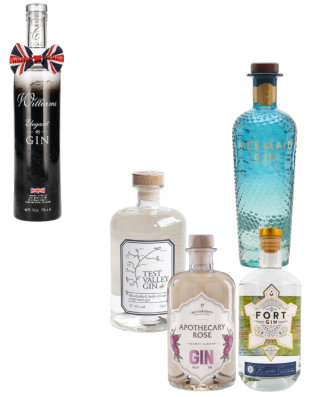Gin has been a favourite of ours for centuries but has seen an even bigger explosion over the last decade or so. It seems everyone is producing it from your small pot stills in the garden shed to the large mass-producing distilleries. The beauty of gin is that you can effectively use any ingredient (botanical) but must contain Juniper as its main botanical. Other examples used include things like orange peel, rosemary, liquorice, coriander and even seaweed. Due to its never-ending popularity we tend to take it for granted but what are the actual origins of this universal beverage.
Its thought that the Chinese first discovered the art of distillation in the 2nd century BC. Their findings were shared along the Silk Route, the main trading route from Asia through to the Mediterranean. Spices were heavily traded along with different botanicals in particular Juniper, which was considered to have medicinal characters and widely used to treat ailments.
But it was a few centuries later in the 1495 when the Dutch used juniper berries, nutmeg and cloves in distillate to add flavour and this herald the birth of Genever and the first time Juniper was used for pleasure as opposed to cure.
 In 1688 Genever became popular in London when Dutch born William III seized power. He had banned all imports from France especially grain and Brandy. He lowered the taxes on home grown cereals and loosened up the laws on distillation and by the end of the 1600’s the gin craze had taken off and was hitting London hard. Several books on distillation had been published and licences were being granted to anyone and everyone. By 1715 London was gripped by an epidemic of Gin consumption particularly amongst the poor as it was so cheap and easy to produce so five years later the first Gin Act came into force to try and curb this epidemic. The price of a licence went up from £20 to £1800 in today’s money.
In 1688 Genever became popular in London when Dutch born William III seized power. He had banned all imports from France especially grain and Brandy. He lowered the taxes on home grown cereals and loosened up the laws on distillation and by the end of the 1600’s the gin craze had taken off and was hitting London hard. Several books on distillation had been published and licences were being granted to anyone and everyone. By 1715 London was gripped by an epidemic of Gin consumption particularly amongst the poor as it was so cheap and easy to produce so five years later the first Gin Act came into force to try and curb this epidemic. The price of a licence went up from £20 to £1800 in today’s money.
This substantial rise did the trick and by 1750 production and consumption went down dramatically. Then, in 1757 there was a catastrophic grain harvest in England and grain for distilling was outlawed for the next three years as it was needed for food. This pushed the price up even further. The point was that gin was cheap to produced and as this was no longer the case the poor turned their attention to beer.
In 1825 the opposite happened. England had a grain surplus, so the cost of a licence was slashed and gin became the popular choice once again. Within a year gin consumption had doubled and was now cheaper than a pint of beer. The introduction of Gin Palaces contributed to the rise as these bars had no real concern for class, gender or even age. This is where new botanicals were introduced and the birth of different styles including London Dry and Old Tom.
As we know this popularity has never really died out (around 80 million bottles are sold annually) and we continue to experience new styles and flavours.
There are many excellent gins on the market and in my mind you can never have too many in your drink’s cabinet. But its worth checking these out:
Williams Chase Distillery
William Chase was the owner of Tyrells Crisps and when he sold the brand he kept his potato farm and turned his attention to spirits.
Sticking with local distilleries try these amazing gins:
Portsmouth Distillery,
Apothecary,
Mermaid
Test Valley.
